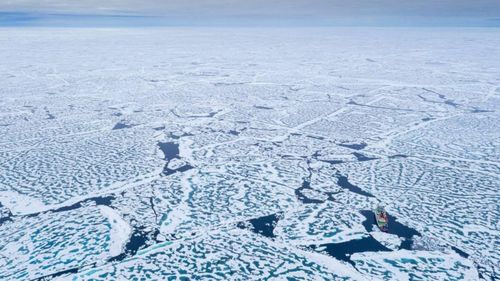Over 100 wildfires have been monitored by the Copernicus Atmosphere Monitory Service in Europe, since June 2020. Reports suggest that the zombie wildfires this year have been the worst since 2003.
In just one month, Arctic fires had released huge amount of greenhouse gases that is equivalent to a year’s emissions of countries like Cuba and Tunisia.
Table Of Contents
How did the zombie wildfires begin?

Zombie wildfires start under the snow when the ice begins to melt during the summer. The layers of peat burn slowly without flame or smoke. As the snow melts in the Arctic, they get ignited as Arctic tundra’s peat is enriched with carbon and methane.
As a result, these greenhouse gases emitted from the wildfires contribute to global warming in addition to the various human activities such as animal husbandry and air pollution.
Did you know? Since 1870, global sea levels have risen by about 8 inches.
The summer wildfires in the Arctic were spread across Siberia to Northern Canada in Alberta.
One of Canada’s largest zombie fires this year was in Chuckegg Creek Fire, Alberta. The fire burned more than 1,351 square miles and was contained within 12 weeks.
Fires were also traced in the Russian Far East Federal District. In the United States, wildfires from heatwaves, like the fires in California, brought smoke across the Great Lakes.
Also Read: Death Valley Temperature Reaches 130F, Highest On Earth
Wildfire season in the Arctic is from May to October
Wildfire season in the Arctic is from May to October with the period between July and August being the worst. Last year in June, almost 50 mega-tonnes of carbon dioxide was released, according to Copernicus.
This year’s emissions were even higher. Scientists have estimated that nearly 244 mega-tonnes of carbon dioxide have been released from January to August. The air quality in Canada, Russia, and Europe have dropped due to this.
‘We know that temperatures in the Arctic have been increasing at a faster rate than the global average, and warmer/drier conditions will provide the right conditions for fires to grow when they have started,’ Parrington said. The company’s monitory is not only important for raising awareness on the impact of wildfires in general and greenhouse gas emissions but can help people and businesses make important decisions to reduce air pollution.
There have been more than 100 blazes across the northern parts of Russia, the Arctic Ocean, and the north of Canada and Alaska. According to data from CAMS Scientists, the starting point of these blazes is hard to identify. Most of them might have been zombie wildfires.
Also Read: Our Sun Has Gone Into A Period of ‘Solar Minimum’, Does it Impact Our Planet?
The Arctic ice is melting at the fastest rate ever recorded in the past 40 years

World Wildlife Fund Chief Polar Adviser Rod Downie said that global warming is breaking records as the Arctic is in meltdown and large areas burn. The organization aims to urgently raise their ambition and drastically show global leadership in finding solutions for climate change.
Wildfires are scorching the Arctic Circle worse than ever before. They are causing drastic ramifications for a region already battling the highest temperatures seen in almost half a century.
In July, international scientists released a study that found the greenhouse effect multiplied the chance of the region’s prolonged heat by at least 600 times. The prolonged heat that hit Siberia would have happened once in 80,000 years, and wouldn’t have existed at all if there was no human interference.
Due to the increased temperatures in Siberia, the Arctic ice is melting at a rate that is faster than any year in the past 4 decades.
The University of Colorado’s National Snow and Ice Data Centre (NSIDC) showed that in 2020, the Siberian Arctic’s sea ice mass is lower than any year since 1979. It has never dropped so low so early, based on natural freezing and melting cycles.
Those cycles, depicted by the NSIDC, typically show the Arctic ice to melt away between July and November. However this year’s ice began to drop away as early as late May to early June.

Between Canada and Russia, that environmental catastrophe has also meant that the North Pole ice sheet has thawed so much this year that it has shattered.
Experts worry the fires may be evidence of a vicious circle of climate change. The Arctic wildfires emit a wide range of pollutants including carbon monoxide, nitrogen oxides, volatile organic compounds, etc.
Bigger fires are a symptom and a cause of climate change, which is occurring rapidly in the Arctic than elsewhere. They leave dark scars and soot, increasing the amount of heat the region absorbs from the sun.


Let’s connect on Facebook, Twitter, and Instagram
Subscribe to never miss a post!





